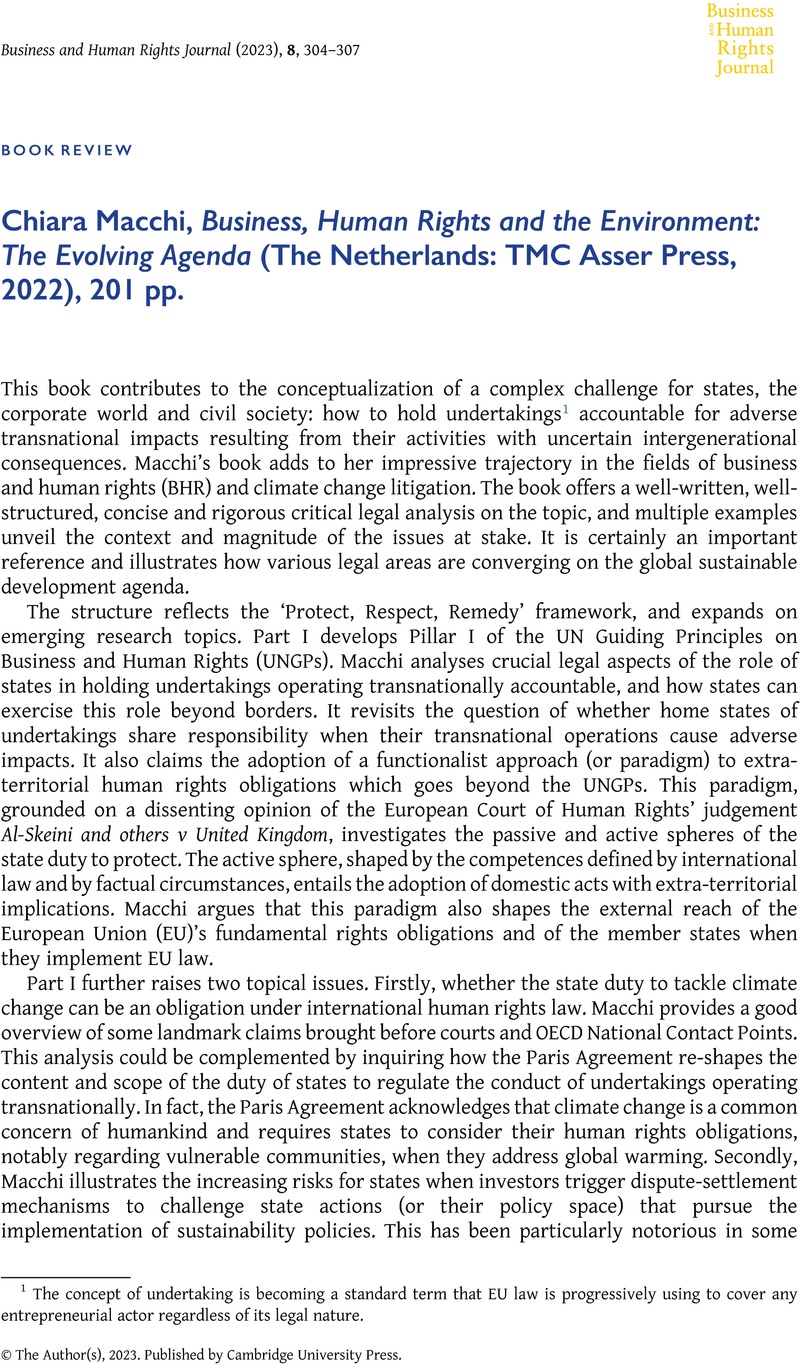No CrossRef data available.
Article contents
Chiara Macchi, Business, Human Rights and the Environment: The Evolving Agenda (The Netherlands: TMC Asser Press, 2022), 201 pp.
Review products
Chiara Macchi, Business, Human Rights and the Environment: The Evolving Agenda (The Netherlands: TMC Asser Press, 2022), 201 pp.
Published online by Cambridge University Press: 17 July 2023
Abstract
An abstract is not available for this content so a preview has been provided. Please use the Get access link above for information on how to access this content.

- Type
- Book Review
- Information
- Business and Human Rights Journal , Volume 8 , Issue 2: Special Issue: Beyond human rights due diligence: What else do we need? , June 2023 , pp. 304 - 307
- Copyright
- © The Author(s), 2023. Published by Cambridge University Press
References
1 The concept of undertaking is becoming a standard term that EU law is progressively using to cover any entrepreneurial actor regardless of its legal nature.


